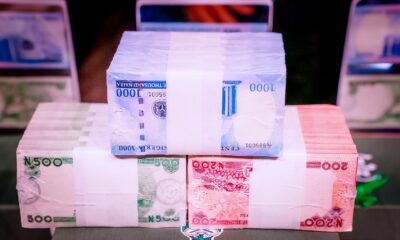It’s not often that you associate The Bangles with prescient outlooks on global markets (no disrespect intended Ladies), but as I look across the landscape of the great game in Asia today, the song is humming through my head. The second line of the chorus is even more poignant. “I wish it was Sunday.” I have a feeling there are many investors feeling the same way.
Asia was always going to start the week on the back foot after a grim Friday session for US equities. Stock markets took fright at hawkish comments from Jerome Powell and fears of higher rates saw equities routed, even though US yields did not really move that much. The US Dollar Index surged through 1.0100 and the higher rate, lower growth trade pushed oil down.
Today, China fears are adding to the downside momentum for Asian markets. China has tightened parts of the Shanghai lockdown, including erecting fences around apartment buildings with Covid-19 infected individuals. Meanwhile, residents of the Chaoyang district of Beijing will have to submit to three days of testing to get on top of the omicron outbreak there, with parts of it “sealed” or “controlled,” to paraphrase Bloomberg’s story this morning. Although some parts of China have been under restrictions longer than Shanghai, omicron’s arrival in Beijing would be an ominous development.
It is important to remember that although market darlings like Tesla and Foxconn are operating normally in China under a “closed-loop,” and China is vigorously playing whack-a-mole across the country to enforce the Covid-zero policy, omicron only has to get lucky once, while those manning the ramparts have to get lucky 100% of the time. Just ask any other previously Covid-zero country.
The difference here is that China is the world’s second-largest economy and has shown no signs it intends to live with the virus. It would be a brave man that bets on President Xi Jinping backtracking on anything he says he is going to do, or on the government in general. With that in mind, the likely pressure valve is going to be disruption to China’s export machine, and a cratering of consumer confidence.
All of that points to lower growth and it is no surprise that the offshore Yuan is getting punished, Asia FX is weaker, and Asian equities are taking fright at a US rate hike, slow China growth pincer move. Probably the only bright spot, ex-China, is that oil prices are also being beaten down as well.
I am not a great fan of blackouts, but I do see the opportunity for some relief rallies in the days ahead by equity markets. That is because the Federal Reserve has headed into its pre-May-FOMC news blackout. That means we do not get any Fed talking heads on the wires with their hawkish talons out on the wires until after the FOMC meeting in early May.
That does not mean markets are out of the woods though. US New Home Sales tomorrow, and GDP prints from Germany, France and the United States on Thursday have downside risks, as does Friday’s US Personal Income and Expenditure and Eurozone Business Sentiment. Upside risks persist in European Flash CPI releases. The United Kingdom released weak data on Friday and the Sterling got punished aggressively, it’s that sort of market.
US earnings season accelerates this week and the results for Q1 should have a very binary impact on markets. Weak results equal bad, superior results equal relief rally. Heavyweights such as Citigroup, McDonalds, and Visa announce this week, but the street will be focused on the FAANG titans. Although I guess they should be called MAANGA these days. (Japan is still relevant) We saw what happened to Netflix last week when the exponential growth forever dream ended, and Facebook earlier this year. The MAANGA’s will need to keep the dream alive this week for the US stock market to have any hope of a sustained pre-FOMC rally.
In Asia this week, Singapore releases core-CPI today with upside risk to the 2.40% expected. Taiwan announces March Industrial Production this afternoon as well. Wednesdays Japan Industrial Production and Retail Sales have obvious downside risks, while Australian CPI could increase the pressure on the RBA to start thinking about seriously considering the remote possibility of at least contemplating hiking interest rates; a doctrine pioneered by the ECB. China releases Caixin PMI on Friday and official PMIs over the weekend. The price action in Asia today suggests downside risk.
The week’s highlight should be the Bank of Japan policy meeting on Thursday before the golden week holidays start on Friday. Given that the BOJ is standing in the 1-year JGB markets today with an unlimited bid to cap yields at 0.25%, the chance of any policy shift on Thursday is infinitesimal. An elegant way to telegraph an impending change would have been to be less aggressive in the bond market these past two weeks, and that hasn’t happened. If any of my readers are thinking that shorting USD/JPY at these levels is attractive, please slap yourself vigorously and say “buy dips” one hundred times.
Finally, something that Asia and the rest of the world should be watching is Indonesia’s decision to ban exports of cooking oil and their raw materials on Friday. Like PLN’s coal supply crisis earlier this year, Indonesia’s oligopolies are struggling to resist the temptation of higher prices overseas, while meeting their contracted domestic supply obligations at lower prices. Cooking oil mysteriously vanished from shop shelves the last time Indonesia capped domestic prices recently, only to magically reappear when that policy was adjusted.
With Eid-al-Fitr starting in the world’s largest Muslim nation next week, it would be a brave government that forced 270 million people to steam the rice instead of rustling up a glorious celebratory nasi goreng. My point is that with inflation sweeping the world, and Russia/Ukrainian food supply disruptions only just starting to be felt, food nationalism is on the rise. I would argue that going hungry in the world’s developing nations will impact societal stability there far faster than $150 oil. Kuala Lumpur palm oil futures are already 4.50% higher today.
Russia and Ukraine are key exporters of grain to the world, but its fertilisers that are making me nervous. Russia is an important potash exporter and natural gas is the key ingredient in the manufacture of urea. The maths isn’t difficult to do with a little research. Food inflation and production challenges, and their impact on the poor of the world, (i.e., most of the world) shouldn’t be underestimated. Their problems will quickly become our own and we can see those impacts already in unrest in Sri Lanka and Pakistan. Admittedly exacerbated by the fact both countries are/were run by populist strongman (male) leaders who are economic dotards. This is a story we should all be watching closely in 2022, more so even than a China slowdown, energy inflation, or inflation-chasing central banks.
Asian equities crushed on US hike/China growth fears.
The week ended sourly on Friday as Wall Street did not pass go and headed directly to jail, even as US yields remained relatively stable. A combination of weekend risk factors and increasing fears that the Fed will accelerate rate hikes torpedoed equities. The S&P 500 collapsed by 2.77%, the Nasdaq tumbled by 2.55%, while the Dow Jones was pummelled by 2.80%. The sell-off continues in Asia, with futures on all three indexes down by between 0.35% and 0.50%.
Asia had zero reasons to be bullish anyway, but weekend news of virus restrictions in a district of Beijing and tightening restrictions in Shanghai deepened fears that Covid-zero will torpedo China growth. Asian markets are in full retreat as China stimulus remains high on talk, and very short on action, other than weakening the currency. Mainland China stock markets have been battered, the Shanghai Composite tumbling by 2.45%, and the CSI 300 falling by 2.20%. Hong Kong is having an even worse day, falling by 2.60%.
In Japan, the Nikkei 225 is 1.70% lower, with South Korea’s Kospi losing 1.45%. Taipei has fallen by 2.25%, with Singapore down by 0.30%. Kuala Lumpur is down by 0.45%, Jakarta is lower by 0.20%, while Bangkok and Manila have fallen by 0.90%. Australian and New Zealand markets are on holiday today. The ASEAN triad of Indonesia, Malaysia and Singapore, with a heavy weighting of old school resources and banking heavyweights, seems to be gaining some defensive flows at the expense of the North Asia heavyweights.
European stock markets can also anticipate a negative opening as the China growth contagion washes up on their shores. President Macron soundly beat Marine Le Pen in yesterday’s presidential runoff election, however, markets had priced this in last week. Any post-election sigh of relief will be very shallow.
US Dollar soars on risk-aversion.
The dollar index soared on Friday, as the UK Sterling slumped and investor fear around China growth pummelled Asia FX, and Fed rate hike expectations, saw a flight to safety. The dollar index leapt 0.50% to 101.11, taking out resistance at 101.00. In Asia today, the rally has continued as China fears take centre stage. The index has risen 0.15% to 101.27. The index’s next technical target is the March 2020 highs around 103.00. With a Fed blackout muting hawkish Fed-speak, and if US earnings releases are strong this week, pullbacks from here are possible, although likely to be temporary. Only a failure of 99.40 changes the US Dollar’s bullish outlook.
EUR/USD closed on a weekly basis below 1.0810, a trendline that goes back to 1985. It fell 0.32% to 1.0797 before staging a dead cat bounce to 1.0820 this morning after Macron’s victory in the French presidential election. Currency markets had priced that outcome last week and the rally has evaporated, and EUR/USD has fallen to 1.0780. News that Europe may be preparing “smart sanctions” on Russian energy imports will not assist the single currency in a risk-off atmosphere. The technical picture, assisted by a widening US/Europe interest rate differential, suggests EUR/USD will now fall to 1.0600 en route to 1.0300. I am not ruling out a move below parity if Europe sanctions Russian gas and oil.
Weak UK data on Friday saw GBP/USD stretchered of the field with a season-ending injury. GBP/USD fell 1.45% to 1.2840, easing another 0.31% lower to 1.2800 in Asia today. The relative strength indicator (RSI) is approaching oversold, allowing for some short-covering, but only a rally back through 1.3000 changes the bearish outlook. A shift in BOE rhetoric to dovish last week increases Sterling’s downside risks. The 1.2670 region is the next support zone and failure signals deeper losses targeting 1.2200 and potentially sub-1.2000 in the weeks ahead.
USD/JPY held steady at 128.60 on Friday, easing slightly lower to 126.45 in Asia. Reluctance to aggressively short the Yen ahead of the BOJ meeting, the BOJ’s operations to cap yields in the JGB market, and some safe-haven inflows from Japanese investors are supporting the Yen at the moment. However, USD/JPY risks remain heavily skewed higher, thanks to a hawkish Fed. Support remains at 127.00 and 126.00, with resistance at 129.50 and 130.00.
The highly risk sentiment-sensitive Australian and New Zealand Dollars both tumbled on Friday. AUD/USD lost 1.70% to 0.7245 on Friday and took out its 3-month support line at 0.7340. China concerns are weighing heavily today, with liquidity impacted by a national holiday. AUD/USD has fallen by another 1.0% to 0.7170 and could target 0.7100 this week as Friday’s technical break was a decisive one. NZD/USD slumped by 1.45% to 0.6635 on Friday, a national holiday seeing the Kiwi fall 0.60% to 0.6595 today. NZD/USD remains in a technical bear market since its fall through 0.6840. Having already reached 0.6600 in 24 hours, some short term rallies are possible, but it remains on track to test 0.6525 this week.
The onshore and offshore Chinese Yuan sailed through 6.5000 on Friday like a hot knife through butter. Weekend developments around Covid-zero have seen another wave of risk-aversion sweep China markets, pushing USD/CNY 0.70% higher to 6.5450, and USD/CNH 0.82% higher to 6.5800. The fall has been precipitous since both USD/CNY and USD/CNH broke through 1-year resistance lines last week and with the PBOC showing no discomfort around the pace or extent of the Yuan decline, pressure will remain on the currencies this week as China growth concerns accelerate. Until the PBOC signals the selloff has gone far enough, both CNY and CNH should continue leading Asia FX lower.
USD/Asia rose powerfully on Friday as risk aversion swept New York markets, exacerbated by China slowdown fears. The losses were led by the Singapore Dollar and Malaysian Ringgit, with the resource-centric Indonesian Rupiah remaining stable and the Korean Won and Taiwan Dollar and Thai Baht having modest losses. USD/KRW, USD/TWD and particularly USD/PHP are all running into resistance at present levels, but I am suspicious that their central banks are around capping gains, especially the BSP. USD/IDR has started to crack today, rising 0.65% to 14450.00 after Friday’s edible oil export ban.
USD/MYR has also risen another 0.65% to 4.3490, and USD/SGD has risen by 0.20% to 1.3737. The Ringgit’s precipitous fall recently has surprised me, MYR gaining zero benefit from Higher commodity prices. Both it, and the SGD to a certain extent, appear to be being used as a proxy for China growth, it being Malaysia’s largest trading partner. With no sign that Bank Negara is going to move to a hawkish monetary policy, MYR will remain under pressure until China shows signs of stabilising. USD/MYR is on track to retest its pandemic lows of 4.4000 and 4.4500.
The divergence in US/Asia monetary policy, and now China growth fears, are now making themselves felt. I expect USD/Asia strength to continue in the months ahead unless regional central banks start deploying their forex reserves heavily.
Oil falls heavily in Asia.
Oil markets fell on Friday as risk aversion and China growth fears weighed on prices. Brent crude fell by 2.40% to 106.10, with WTI falling by 2.20% to $101.70 a barrel. The tightening Covid-zero restrictions in Shanghai, and fears omicron has spread in Beijing torpedoed sentiment today, sending prices lower once again in Asian trading. Brent crude is 2.50% lower at $103.50, and WTI is 2.60% lower at $99.10 a barrel, with stop-losses occurring as it fell through $100.00 a barrel.
I am sensing a possible turn in sentiment in oil markets now, because two ostensibly bullish headlines have been completely ignored by Asian markets in a world where crude supplies are supposedly, very tight. Firstly, Reuters is running a story suggesting that Europe may be preparing “smart sanctions” on Russian energy imports. I have no idea what a smart sanction is, but anything that has oil, sanctions, Russia, and Europe in the same sentence, should be bullish. Secondly, a major Libyan oil terminal has suffered heavy damage during recent clashes there.
It seems that China is the elephant in the room and markets feel that slowing China growth could materially change the supply/demand equation on international markets. That is a risk I have mentioned in the past, but I have reservations that any European energy sanctions on Russian oil and natural gas can be ignored for long. The week also has plenty of binary outcome risk from the week’s data calendar internationally, and US earnings, which could swing prices either way. I do acknowledge the China risk, though.
With that in mind, I am sticking to my guns and continue to expect that Brent will remain in a choppy $100.00 to $120.00 range, with WTI in a $95.00 to $115.00 range.
Gold wilts as the US Dollar rallies.
Gold received no risk-aversion bids on Friday, as a soaring US Dollar squeezed out the speculative longs in gold, sending it 1.0% lower to $1932.00 an ounce. Gold continues its retreat in Asia as the US Dollar rises, losing another 0.75% to $1917.50 an ounce. It appears that the $2000.00 an ounce region has proved an insurmountable barrier once again, and the fast money is now running for cover.
I said on Friday that gold looked vulnerable to a failure of the $1940.00 support which could see speculative long positions getting culled. That has now occurred and $1940.00 now becomes intraday resistance. Gold is in danger of now breaking nearby support at $1915.00 an ounce, and then testing critical support at $1880.00. Failure if $1880.00 signals a capitulation trade targeting the $1800.00 an ounce region where patient investors could consider loading up on gold longs once again.
On the topside, gold has resistance at $1940.00, $1980.00, and $2000.00 an ounce. I believe option-related selling at $2000.00 will be a strong barrier as evidenced by the price action last week.





























